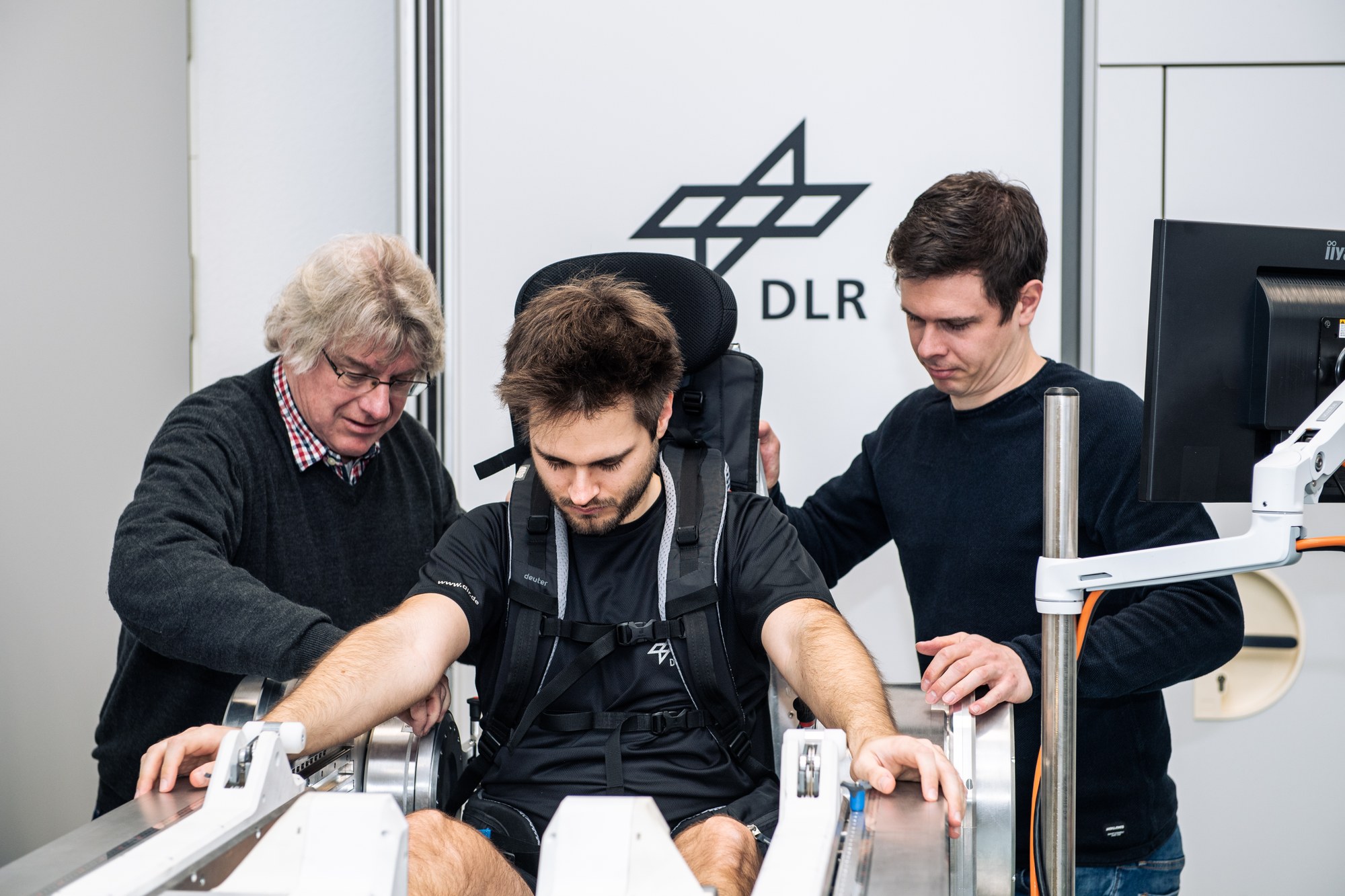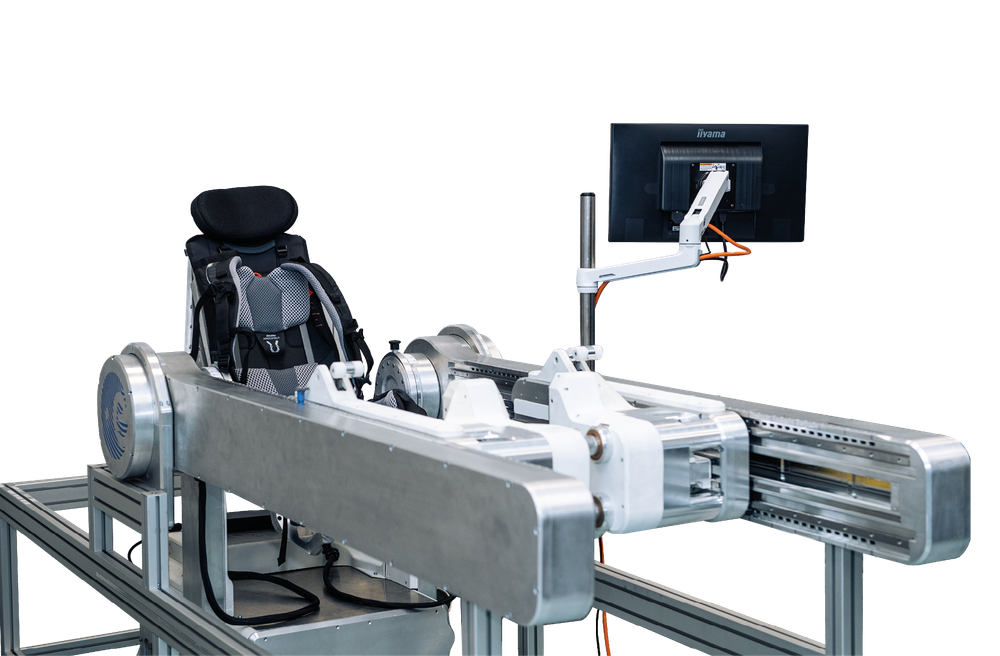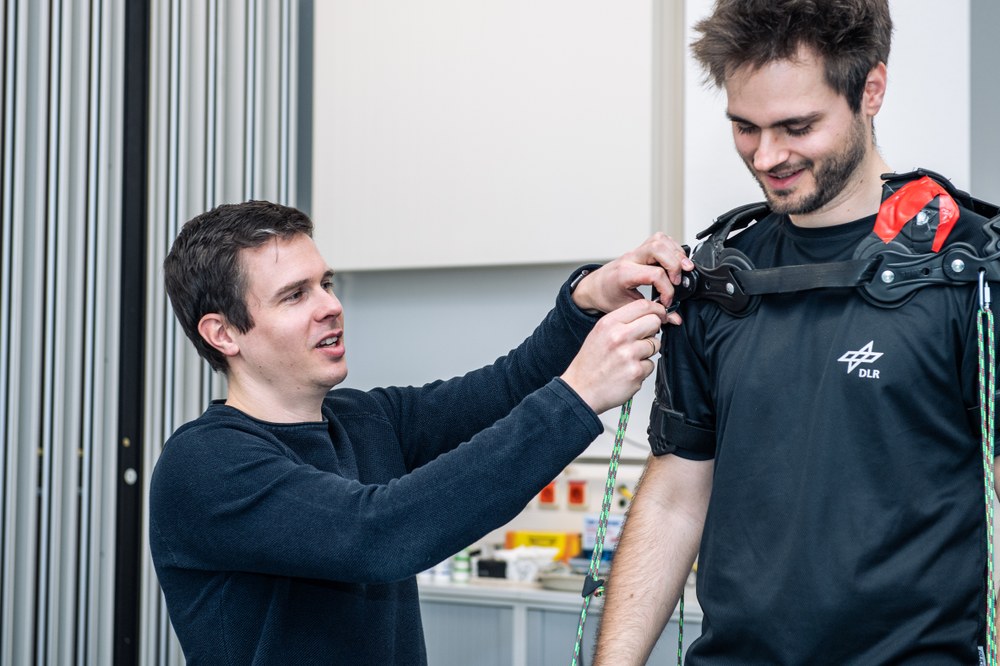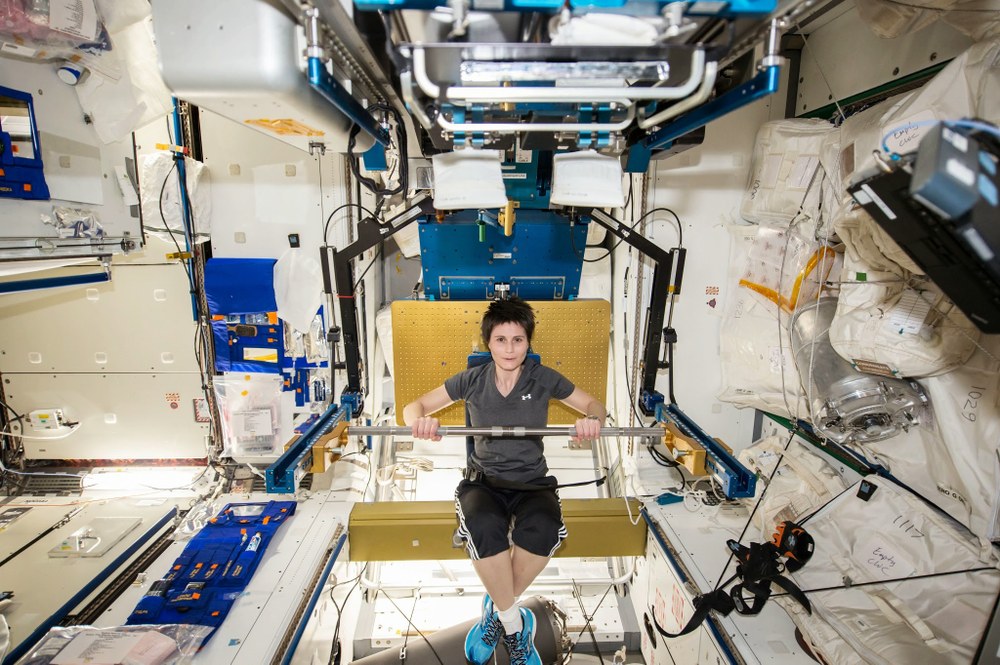A fitness studio for space

A lack of exercise quickly leads to sluggishness. And in space, the effect is quicker and even worse. This is partly due to the microgravity conditions. When you walk or raise an arm on Earth, your muscular strength has to overcome Earth's gravitational pull, but this is almost entirely absent in space. For this reason, astronauts have to make an extra effort to stay fit. That is not all: muscle atrophy in microgravity alters the body's metabolism, and the lack of muscle strength also reduces bone stability. The legs are particularly affected, as they are hardly used in space. As a countermeasure, astronauts on the International Space Station ISS undergo a daily two-hour training session on a treadmill, bicycle ergometer and weight training machine. But in smaller spacecraft, such as the kind envisioned for future missions to Mars, there is no room for this equipment. This is where NEX4EX and ATHLETIC – two concepts for an all-purpose gym for space – come in. DLR editor Andreas Ellmerer tested both prototypes under very terrestrial conditions at the DLR Institute of Aerospace Medicine.
ATHLETIC – jumping while lying down
Climbing into the exoskeleton of the AstronauT HeaLth EnhancemenT Integrated Countermeasure (ATHLETIC) is easier said than done. To replicate the effects experienced in space for this test, the jump training is not performed standing up, but lying down. "This exercise equipment is designed to reduce the loss of leg muscle and bone mass," says Jonas Böcker of the DLR Institute of Aerospace Medicine, who is leading the study together with Jochen Zange. The ISS has a treadmill and dumbbells for working out: "But they don't really allow for reactive exercises that train the springing properties of the muscle-tendon complex as well as the muscles themselves," says Böcker. The ISS devices would also be too bulky for a longer space mission. However, ATHLETIC isn't exactly dainty either. "It's a prototype," explains Zange. "This is a case of outsmarting gravity." Hence the expansive, heavy support frame. Of course, the rollers beneath the equipment during the test would not be part of the set-up in space either.

In space, astronauts would float into the device, but in the Cologne laboratory, the test subjects have to climb through the frame from below. They wear cycling shoes and their feet are secured in brackets, while a standard bicycle saddle ensures sitting comfort, and a kind of backpack holds the upper body against the backrest. This is vital to prevent the test subjects from being thrown out of the ATHLETIC device or the entire device from being thrown across the spacecraft under microgravity conditions. Andreas' position within the exoskeleton is adjusted after a few minutes. First, he does a brief warm-up to get used to the movements. Then things get serious with squats – 10 first, then 20 – and lying jumps. "The machine is now adjusted in such a way that almost 100 percent of the test participant's body weight is engaged during jumping," says Jonas Böcker. Increasing the weight further is also possible – as much as 300 kilograms would be possible for astronauts that are also advanced gym enthusiasts.

Initially unfamiliar to even those with considerable gym experience, as the footrest of the ATHLETIC prototype is pushed, the device's backrest pushes from behind. Correct flexion angles and hip positions are essential for enabling the leg, hip and back muscles to work as intended. "Coordination is easier in microgravity," says Zange. Throughout the training session, several parameters, including forces, distances and angles, electrical activity in the leg muscles and heart rate, are displayed on the monitor. The exercises are obviously having an effect. Andreas feels the strain, as the exercises that combine jumping with various forms of strength training leave him out of breath.
DLR's search for test participants
The DLR Institute of Aerospace Medicine regularly seeks participants for various research activities. These studies investigate the effects of external conditions on human health, living standards and performance. They cover a wide range of topics. Not only are researchers investigating the effects of microgravity on humans, but also their ability to concentrate when tired and how their bodies cope with reduced oxygen levels at high altitudes.
Bed rest studies are among the best-known research conducted at :envihab, the research facility operated by the DLR Institute of Aerospace Medicine. Here, participants spend long periods of time lying down, with their bodies tilted in a six-degree head-down position to simulate the effects of microgravity on the human body.

NEX4EX – balance, wobble and squat
Onto the next device. Compared to the ATHLETIC exoskeleton prototype, the Novel Exercise Training Hardware for Space Exploration (NEX4EX) appears easier to manage. Andreas begins by attaching a shoulder strap and standing on a base plate. Four cords are then hooked from his belt to the four corners of the base plate, which covers an area of approximately one square metre. In microgravity, the cords would be tightened to simulate the person's body weight pressing against the plate to mirror conditions on Earth. In addition to muscle training, this prototype aims to refine the spring properties of the muscle-tendon complex, offering several workout setups.

Balance training: The cords are pulled down one by one. Andreas needs to push against the resulting force with his legs slightly bent to maintain his balance. The computer randomly selects the pulling directions demanding concentration and quick reactions from Andreas, who also has the added difficulty of smiling for the camera.
Balance board: The base plate wobbles and challenges the user's stability. How does it feel? "Like riding a mountain bike. But without handlebars." So it's a little familiar.


Strength and jump training: The system is tilted horizontally, while an extra plate with shoulder pads supports the user's back. The user then does squats and jumps, sometimes from a crouch position, sometimes hopping on the forefoot.
EX4EX allows researchers to monitor different forces and movements, muscle activity and heart rate via monitors. "The loads on the leg structures are quite high," says Böcker. This led to sore muscles among the participants who tested the apparatus at DLR, including our editor Andreas, who felt as though he had completed an intensive gym session.
Next test on a parabolic flight
The next step is to test the equipment on a parabolic flight. To conduct such a test, a research aircraft makes a steep ascent before reducing power and descending quickly to a lower altitude, before repeating the process. This flight pattern creates intervals of approximately 20 seconds during which passengers experience microgravity that simulates the conditions experienced in space. When the time comes, DLR will again seek out volunteers to test the space gym. For more information and application details, contact 'DLR Probandensuche'.
The latest study
Ten participants tested the newly developed NEX4EX and ATHLETIC training equipment. They were selected according to the following requirements: aged between 30 and 60 years old, between 1.5 and two metres tall, weighing between 50 and 100 kilograms and physically fit.
The two training devices were developed by Space Applications Services on behalf of the European Space Agency (ESA). German company Deuter was also involved in ATHLETIC, while Novotec, AnyBody Technology and the University of Konstanz contributed to NEX4EX. The DLR Institute of Aerospace Medicine conducted medical and scientific evaluations of the equipment. The researchers also made suggestions for further development.

ESA/NASA
An Article by Katja Lenz from the DLRmagazine 173
